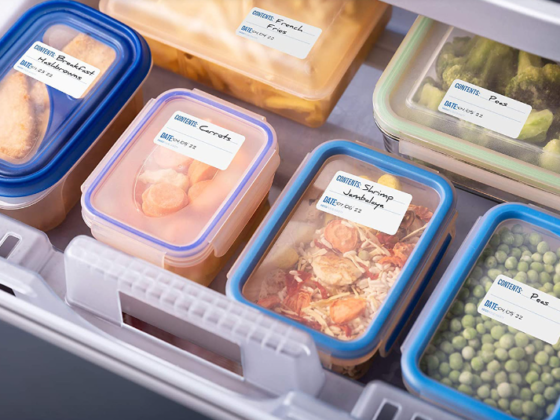Ah, the Abundance of Autumn. Nature’s time to teach us about our own creativity. For us at Mess, we like to get pickling. It’s a thrifty way to make use of your overabundant crops and also a relatively simple one – and you don’t feel you have to grow your own pickles. During the harvest in autumn, markets and supermarkets offer a wealth of fantastic seasonal produce to take the plunge and start pickling.
Pickling is growing in popularity thanks to the “wellness” trend – think sauerkraut, kimchi and Japanese pickles. It’s a great method of preserving fruit and vegetables, and adding flavours and transforming them into delicious salads, sides and accompaniments.
Labels are a must and add a creative flair to the jar that you can use as a gift or simply remember what pickle, you were pickled.
We’d recommend our Dissolvable Canning Labels for Mason Jars
And trying this simple Kimchi recipe by thekitchn.com.
INGREDIENTS
-
- 1 medium head napa cabbage (about 2 pounds)
- 1/4 cup iodine-free sea salt or kosher salt (see Recipe Notes)
- Water, preferably distilled or filtered
- 1 tablespoon grated garlic (5 to 6 cloves)
- 1 teaspoon grated peeled fresh ginger
- 1 teaspoon granulated sugar
- 2 tablespoons fish sauce or salted shrimp paste, or 3 tablespoons water
- 1 to 5 tablespoons Korean red pepper flakes (gochugaru)
- 8 ounces Korean radish or daikon radish, peeled and cut into matchsticks
- 4 medium scallions, trimmed and cut into 1-inch pieces
INSTRUCTIONS
1. Cut the cabbage. Cut the cabbage lengthwise through the stem into quarters. Cut the cores from each piece. Cut each quarter crosswise into 2-inch-wide strips.
2. Salt the cabbage. Place the cabbage in a large bowl and sprinkle with salt. Using your hands, massage the salt into the cabbage until it starts to soften a bit. Add enough water to cover the cabbage. Put a plate on top of the cabbage and weigh it down with something heavy, like a jar or can of beans. Let stand for 1 to 2 hours.
3. Rinse and drain the cabbage. Rinse the cabbage under cold water 3 times. Set aside to drain in a colander for 15 to 20 minutes. Meanwhile, make the spice paste.
4. Make the spice paste. Rinse and dry the bowl you used for salting. Add the garlic, ginger, sugar, and fish sauce, shrimp paste, or water and stir into a smooth paste. Stir in the gochugaru, using 1 tablespoon for mild and up to 5 tablespoons for spicy (I like about 3 1/2 tablespoons); set aside until the cabbage is ready.
5. Combine the vegetables and spice paste. Gently squeeze any remaining water from the cabbage and add it to the spice paste. Add the radish and scallions.
6. Mix thoroughly. Using your hands, gently work the paste into the vegetables until they are thoroughly coated. The gloves are optional here but highly recommended to protect your hands from stings, stains, and smells!
7. Pack the kimchi into the jar. Pack the kimchi into a 1-quart jar. Press down on the kimchi until the brine (the liquid that comes out) rises to cover the vegetables, leaving at least 1 inch of space at the top. Seal the jar.
8. Let it ferment for 1 to 5 days. Place a bowl or plate under the jar to help catch any overflow. Let the jar stand at cool room temperature, out of direct sunlight, for 1 to 5 days. You may see bubbles inside the jar and brine may seep out of the lid.
9. Check it daily and refrigerate it when ready. Check the kimchi once a day, opening the jar and pressing down on the vegetables with a clean finger or spoon to keep them submerged under the brine. (This also releases gases produced during fermentation.) Taste a little at this point, too! When the kimchi tastes ripe enough for your liking, transfer the jar to the refrigerator. You may eat it right away, but it’s best after another week or two.
RECIPE NOTES
Salt: Use salt that is free of iodine and anti-caking agents, which can inhibit fermentation.
Water: Chlorinated water can inhibit fermentation, so use spring, distilled, or filtered water if you can.
Seafood flavor and vegetarian alternatives: Seafood gives kimchi an umami flavor. Different regions and families may use fish sauce, salted shrimp paste, oysters, and other seafood. Use about 2 tablespoons of fish sauce, salted shrimp paste, or a combination of the two. For vegetarian kimchi, I like using 3/4 teaspoon kelp powder mixed with 3 tablespoons of water, or simply 3 tablespoons of water.
Storage: Kimchi can be refrigerated for up to a few months. Use clean utensils each time to extract the kimchi from the jar.



